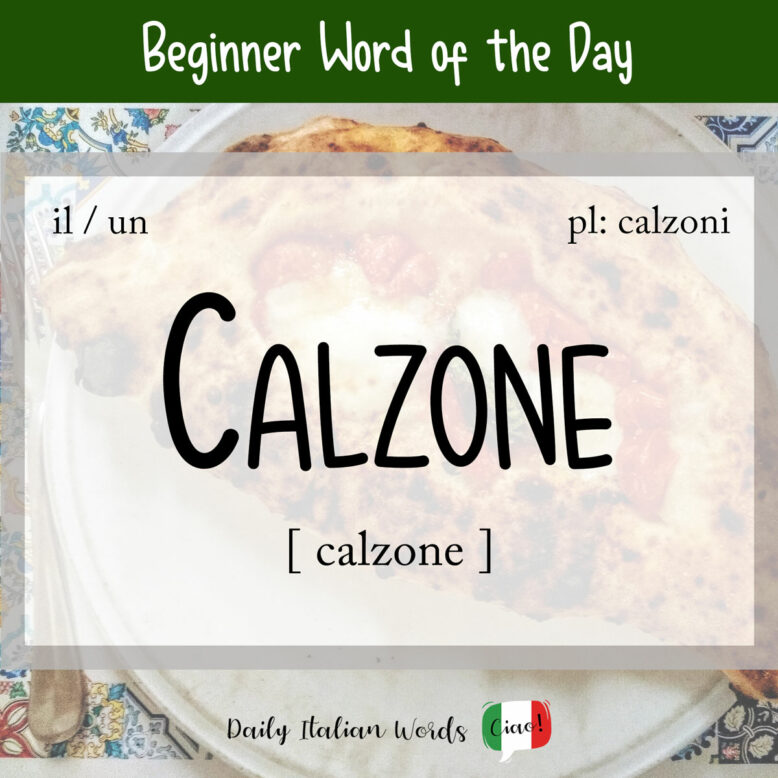A calzone is a speciality pizza, originating from Naples and Puglia, that is folded in half before being baked in the oven or fried. Each region in Italy has its own distinct variation, but popular fillings include mozzarella, parmesan, ricotta, pecorino, ham, salami, vegetables and tomato sauce.
Origin of the word:
The word calzone was coined back in the 18th century. However, before the invention of the food, calzone had the literal definition of trouser leg, while the plural calzoni meant trousers. For reasons unknown, it was thought that trouser legs bore a resemblance to the shape of the folded pizza!
It is the combination of the augmentative suffix -one and the word calza, meaning sock / stocking, which in turn comes from the Latin calceus, meaning shoe.

Learn with our video
How do you pronounce ‘calzone’ in Italian?
As with many Italian food names, the pronunciation of calzone was Americanised over time, most likely because Italian immigrants were weary of constantly trying to correct the pronunciation.
Indeed, most English speakers pronounce calzone as either:
- kal (as in ‘California’) – zone (as in ‘zone’)
- kal (as in ‘California’) – zone (as in ‘zone’) – ee (as in ‘eat’)
The authentic Italian pronunciation of calzone differs from the English in two main ways. First, the z is pronounced /ts/. Second, the word final e is always pronounced, not as /i/ but /e/. Have a listen to the correct pronunciation:
<< CALZONE >>
/kal’tzone/
Sto preparando il calzone classico, ripieno di mozzarella, prosciutto cotto e pomodoro.
I’m preparing the classic calzone filled with mozzarella, cooked ham and tomato.

Calzone is a masculine noun. The plural is calzoni with the word-final i, so its pronunciation is fairly similar to the second English version.
<< CALZONI >>
I ragazzi seduti al tavolo numero cinque hanno ordinato tre calzoni e tre birre.
The guys sitting at table number five have ordered three calzoni and three beers.
Did you know…?
The calzone di cipolla alla pugliese (Puglian onion pie) has a traditional rounded shape and is not a pizza but a pie. It contains not only onions but also plum tomatoes, anchovies and black olives. It’s one of the signature dishes of the Puglia region and, like many Italian dishes, goes by various names, including pizza di cipolla. See a recipe for it on Memorie di Angelina.
This article is also available in video format on our YouTube channel. The audio version can be found on Podbean, Google Podcast, Apple Podcast and Spotify.
Heather Broster is a graduate with honours in linguistics from the University of Western Ontario. She is an aspiring polyglot, proficient in English and Italian, as well as Japanese, Welsh, and French to varying degrees of fluency. Originally from Toronto, Heather has resided in various countries, notably Italy for a period of six years. Her primary focus lies in the fields of language acquisition, education, and bilingual instruction.


